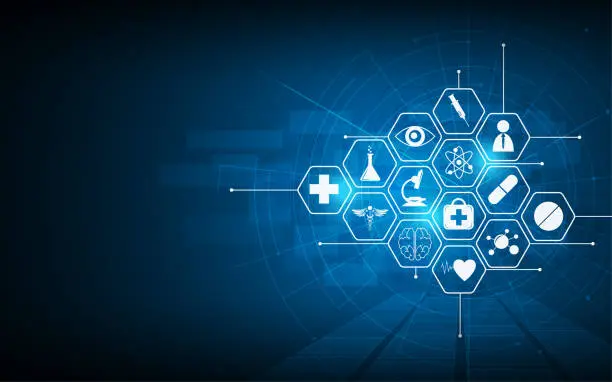The Battle Between Paper and Digital
The last few years have witnessed a significant and crucial shift in the use of technology in such a way that almost all facets are our lives are highly influenced by the digital revolution and the digitalization of even the simplest human acts. Healthcare stands as one of the most disposed sectors which has judiciously made use of digitalization to its benefit to the fullest. The technological advancements in healthcare have been massive and it has resulted in huge strides in health and
quality of life


Current Scenario
Healthcare has majorly changed its approach toward data recording and has swiftly transcended to the digital way of storing and managing the patient database. Even thoughthe transition from paper to digital storage has brought numerous advantages, it has also introduced its fair share of challenges, some of which shall be explored in this post. The aspects of challenges in comparison to its digital counterpart in the storage, retrieval, and sustenance of patient databases in a paper-based process can be categorized into the following buckets.
Accessibility
One of the predominant struggles with the paper version of data is its accessibility and retrieval. Traditional medical records are most often scatteredacross departments, doctors, and healthcare facilities which makes the process of retrieval time-consuming and tedious. This leads to delays and a big margin for errors in patient information especially during emergencies or when healthcare professionals require immediate access to critical information.Electronic Health Records (EHRs), on the other hand, enable healthcare providers/facilities/managers to access and share information across various platforms seamlessly. The ability to search for specific data, such as test results or medication history, remarkably enhances the speed and accuracy of healthcare delivery.

Data Security and Privacy
in this era of growing need and respect for privacy, the same can be extrapolated to the healthcare domain as well. Patient confidentiality and datasecurity are fundamental and vital in the healthcare industry today. Paper-based records are vulnerable to physical damage, loss, or unauthorized access. The risk of misplacing or misfiling sensitive information poses an augmented threat to the patient’s privacy.EHRs, come in as a great alternative here as it offers immense and multi-level security features to ensure that the patient’s data is confidential. Robust encryption techniques, access controls, and audit trails ensure that only authorized individuals can access patient records. Furthermore, digital systems allow for easier tracking and monitoring of data access thereby reducing the risk of privacy breaches.

Storage
Management and maintenance of paper-based records will require humungous volumes of paper and physical storage spaces, which itself is a formula for logistical nightmares. Adding to it, healthcare facilities often require dedicated spaces/rooms or warehouses to store patient files, leading to additional expenses. The cost of printing, copying, and mailing paper records also adds to the financial burden.EHRs, however, completely eliminate the need for a physical space for data storage. The patient records are stored on servers, cloud-based platforms, or specialized software systems, requiring minimal physical infrastructure. Moreover, the ability to quickly retrieve and share records electronically reduces administrative overhead, allowing healthcare providers to focus more on swift patient care which is the prime focus.
Data Integrity
Maintaining the integrity of patient data is vital for accurate diagnoses, treatment plans, and research. However, paper records are susceptible to human errors, such as illegible handwriting or missing/incomplete/insufficient information, which may lead to severe medical mistakes, delayed attention of patients, and/or a drastic decline in the quality of the healthcare provided. EHRs, on the flip side, ensure improved data quality and integrity by lowering the oversights caused by manual entry. Additionally, interoperability between different healthcare systems enables seamless, steady data exchange among healthcare providers. This facilitates better care coordination, reduces redundant tests or procedures, and enhances patient safety.Having said this, we also have to accept that the transition from a paper-based to a fully digital patient repository is not an easy ordeal and comes with its own share of challenges. Some of the concerns that may come up during the transitions may include



Step by step
1. Time consumption – fully shifting to a digital repository make take time to ensure complete effectiveness as Legacy paper records may need to be scanned and converted into digital formats, which can be time-consuming and tacky.
2. Compatibility – compatibility issues between different electronic systems can hinder the seamless sharing of patient data
3. Financials – changing to a fully digital mode may require substantial investments in technology infrastructure, training, and data migration
4. Interoperability – Interoperability standards and protocols are still evolving, making it an acquiescent process at the least before it gets widely accepted
5. Employability – Many may view digitalization as a process of employment loss to many pink-collar jobs such as data entry operators/receptionists
though this could be an ample opportunity for them to acquire digital skills required to continue their employment.
Conclusion
While we understand that the transition from paper to digital storage has its challenges, the benefits of electronic health records and digital patient data management are undeniable. The accessibility, security, efficiency, and cost effectiveness of digital storage outweigh the limitations of paper-based systems. As technology continues to advance, addressing interoperability issues and ensuring data security will be crucial in unlocking the full potential of digital healthcare and improving patient outcomes. Promoting user-friendly software like SWIFT-EHRs would profoundly change perceptions of these transitions thereby helping healthcare professionals and facilities to ease into the process quickly and efficiently with less consumption of time astime is the most precious medicine of all.
